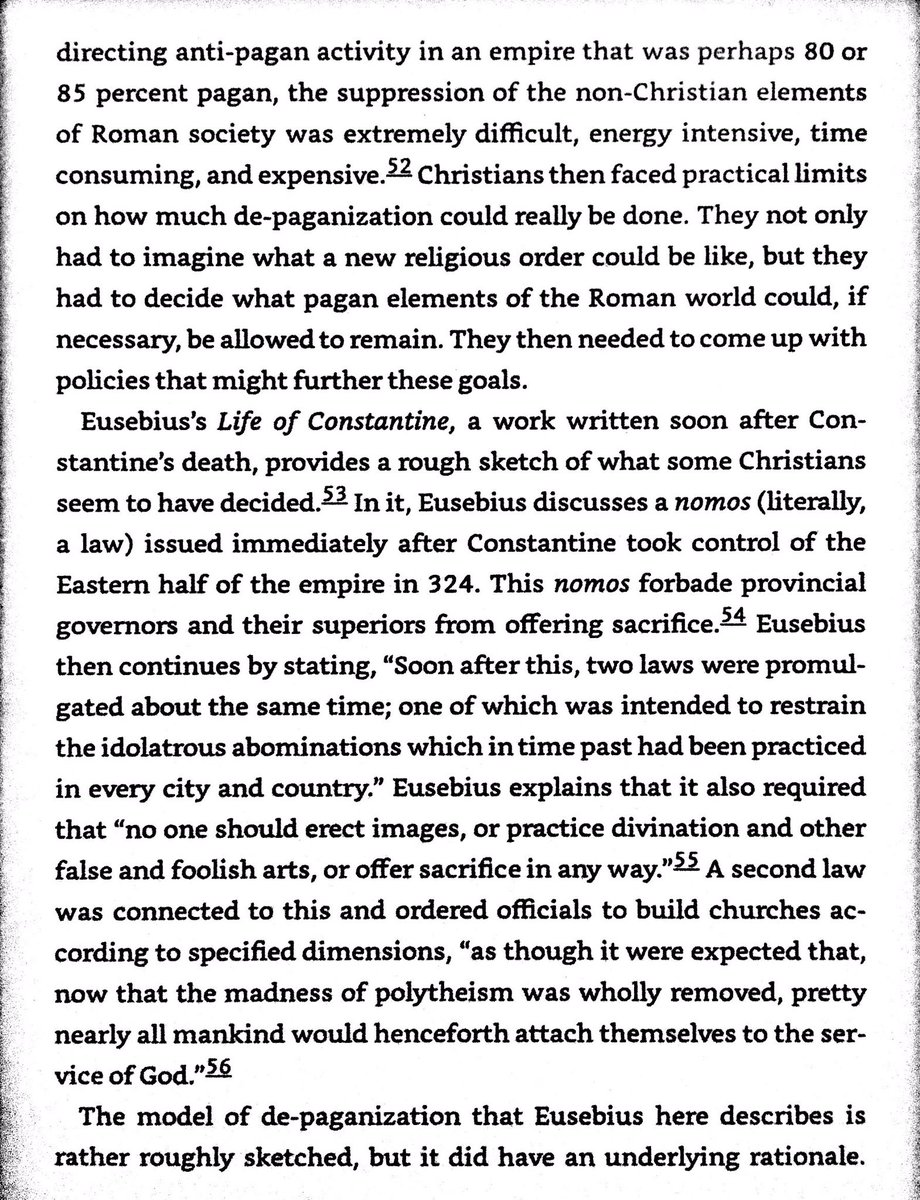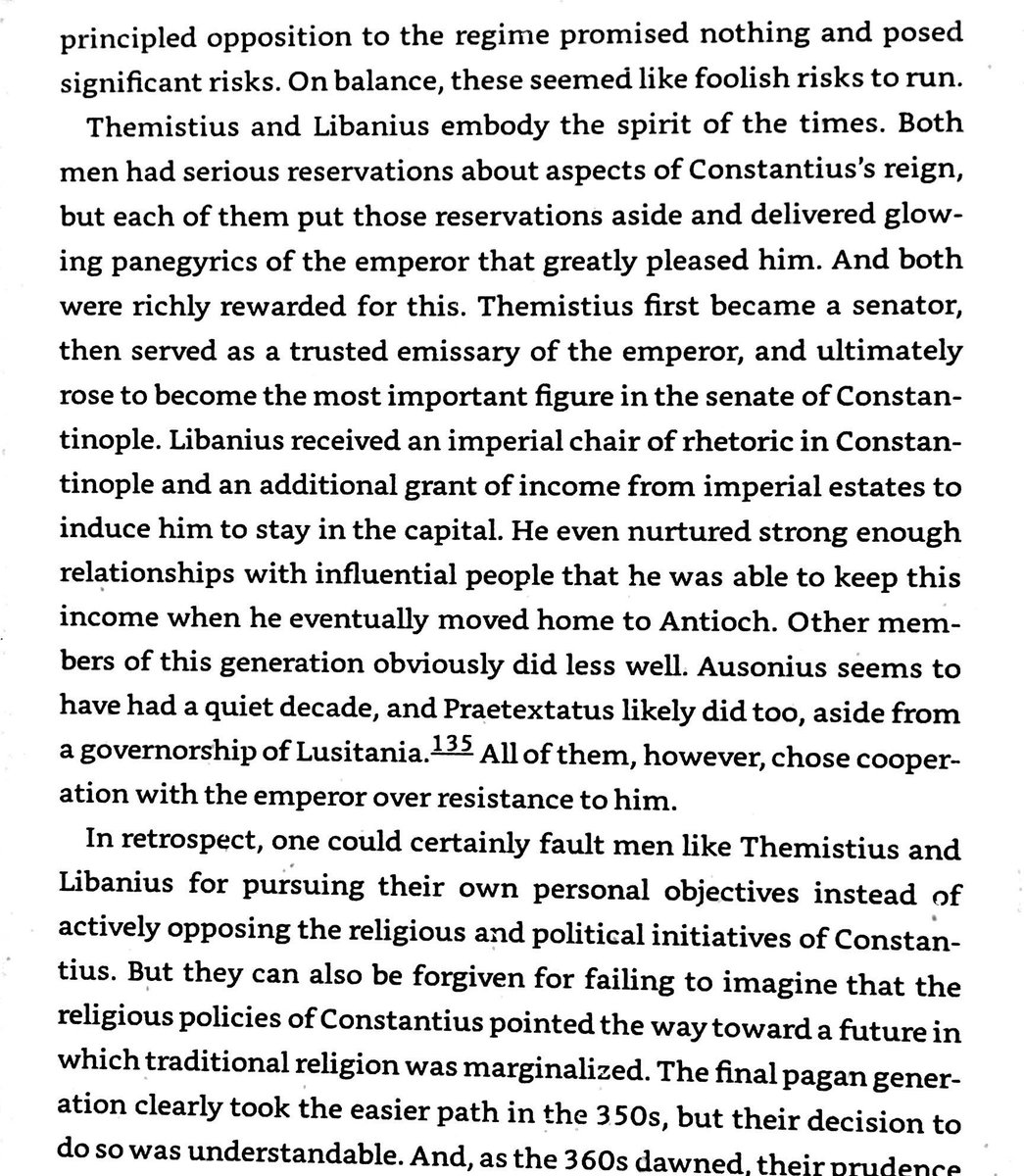Young pagans and Christians saw theirs as a defining struggle of their era. The older pagans, having grown up in a stable, prosperous, and supermajority pagan society failed to grasp the importance of the religious strife. 

Roman religion’s best modern equivalent is Hinduism - diversity of ceremonies, gods, and temples that permeate a society. 

After Christians gained tolerance & patronage from Constantine, they quickly began dreaming of depaganizing the Empire by ending rituals and destroying monuments. 





Emperor Constantius pushed increasingly anti-pagan policies in the 350s. These were mostly symbolic policies, leaving pagan elites discomforted but still unresponsive. 



Emperor Julian the Apostate’s rise to power is almost a pagan version of Constantines - an Emperor raised in a different faith who overcomes long odds with divine aid. 





Julian purged relatively few Christians, but ended the light persecution of pagans. He picked pagan and philosopher courtiers for patronage. 





Far from a simple conservative, Julian understood the need for a strong and vital pagan faith that preserved its identity while dealing with issues the Christians had previously monopolized. 



Like the Protestant Reformation, state fiscal desires (in this case seizure of pagan temples) seem to have played a role in religious shift. 



Late 4th century shift in Roman elites pursuing careers in the Church over the state or bureaucracy. 

Late 4th century Church officials had great authority and influence from their wealth and the masses of faithful. Bishop of Rome already one of the most important men in the Empire. 



In the 380s, Eastern Empire turned pagan holy sites into museums, while the Western Empire confiscated pagan property. No doubt the state profited immensely from its new property, in an eerie foreshadowing of the monastery seizures in the Reformation. 



Pagans tried to preserve their practices using an appeal to Emperor ‘s civic duty and Roman identity. Christians controlled enough levers of power to prevent the appeal from reaching the Emperor. 



Shift in religious demographics, weak Imperial state, and strong religious institutions (with important ascetic role) led to increased ecclesiastical influence. Saint Ambrose even claimed veto power over Imperial policy. 



Christian and Pagan sources provide two entirely separate stories about a riot and the local response. The Emperor credited both parties for their services, merely desiring loyalty. 







With no fear of Imperial authority, Christians attacked pagan shrines & temples with support of friendly local officials. With no extralegal authority, pagans were only able to beg for state to protect them. 







Strongly recommend this book. Modern parallels are that a movement built around an identity closely linked to a state (pagans/conservatives) being incapable of defeating a rival movement with parallel power structures (Christians/leftists) that competes for state power.
@Rjrasva @blog_supplement @omarali50 @EvanPlatinum @123456789blaaa @Horacethe1st @ByFisted @June_beetle @qin_duke @ChrisNahr you all might find this thread & book interesting
• • •
Missing some Tweet in this thread? You can try to
force a refresh















































